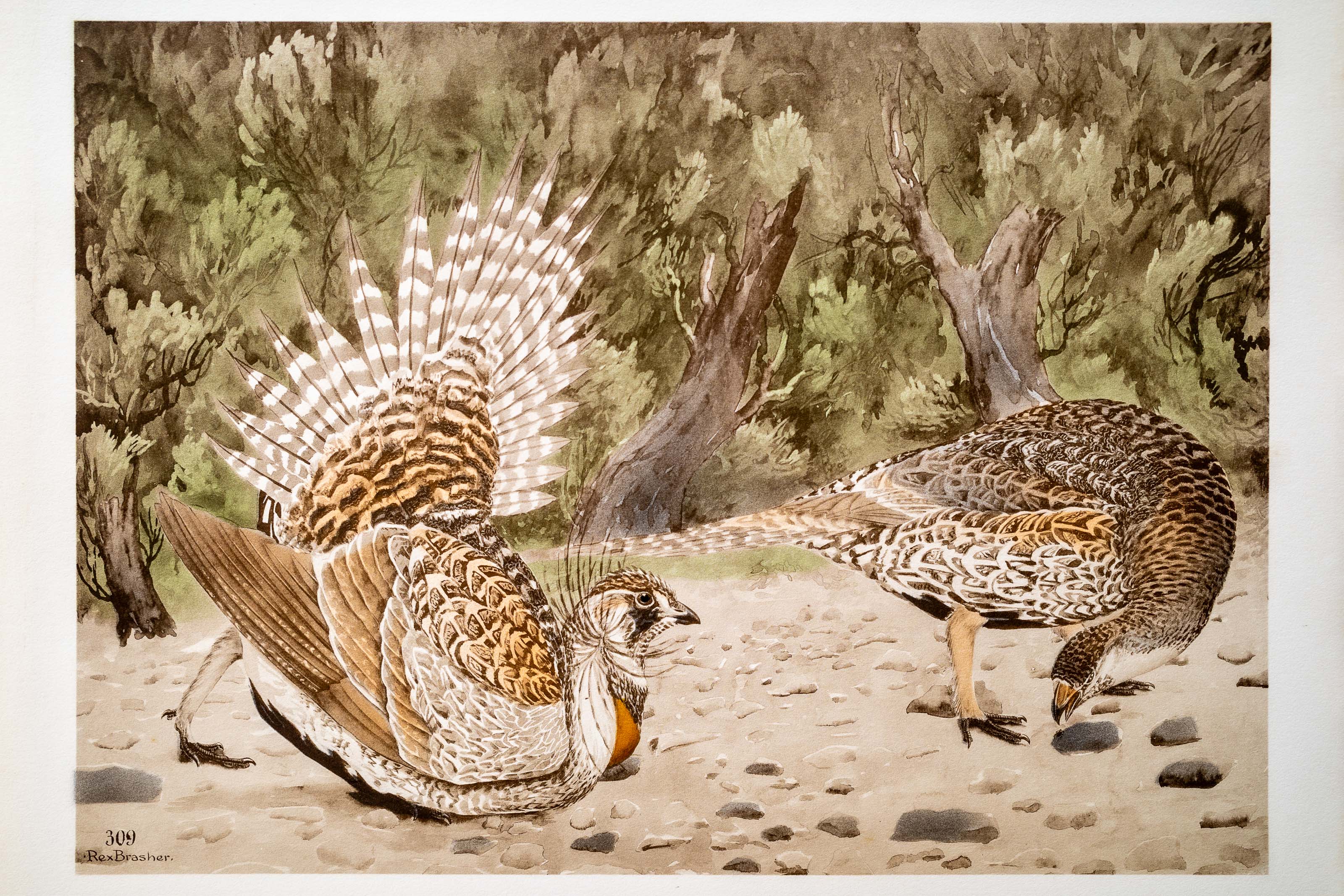
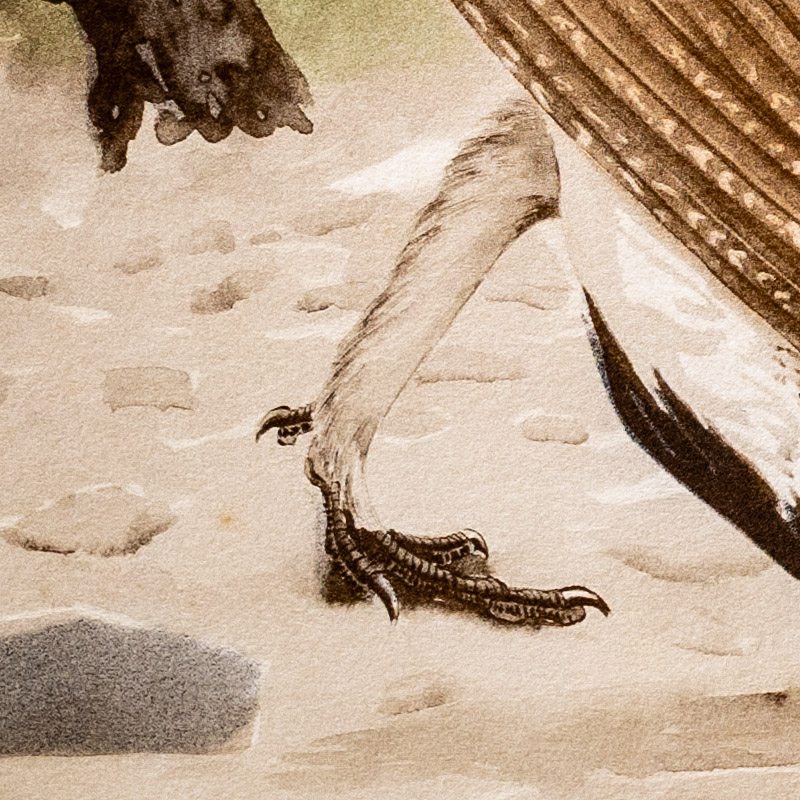
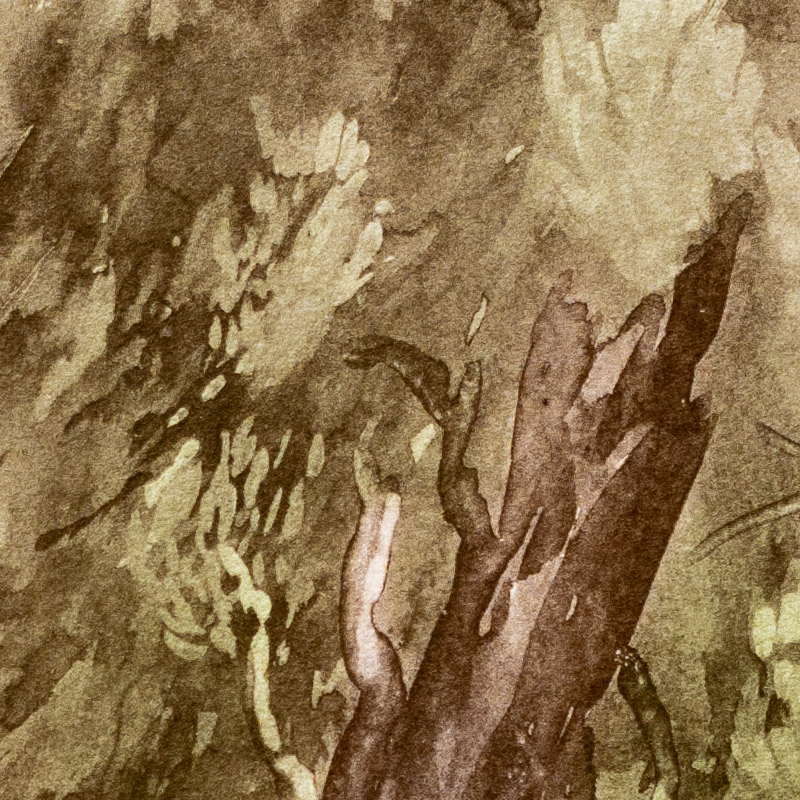
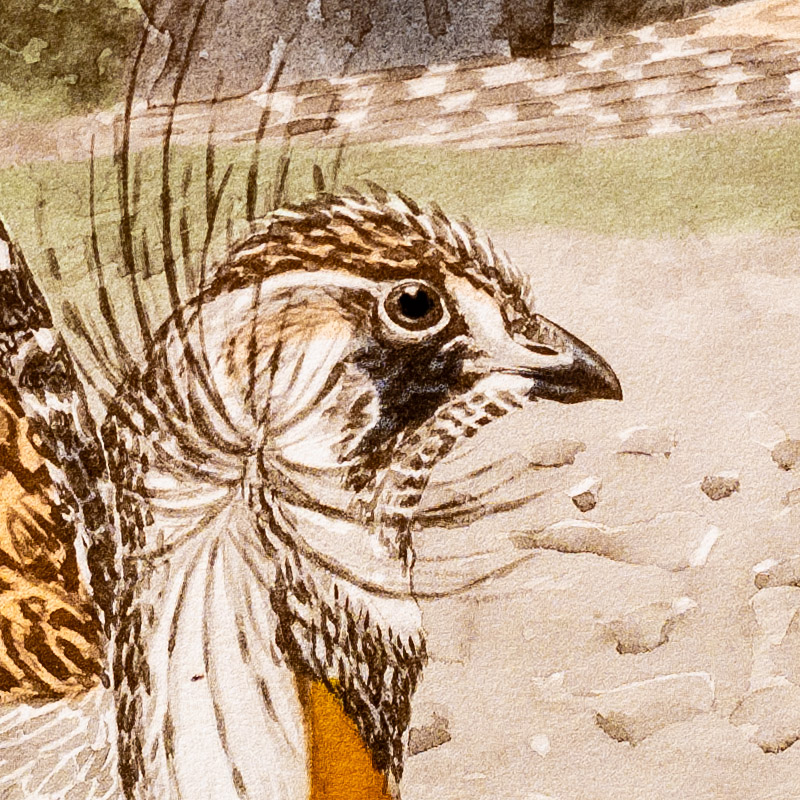
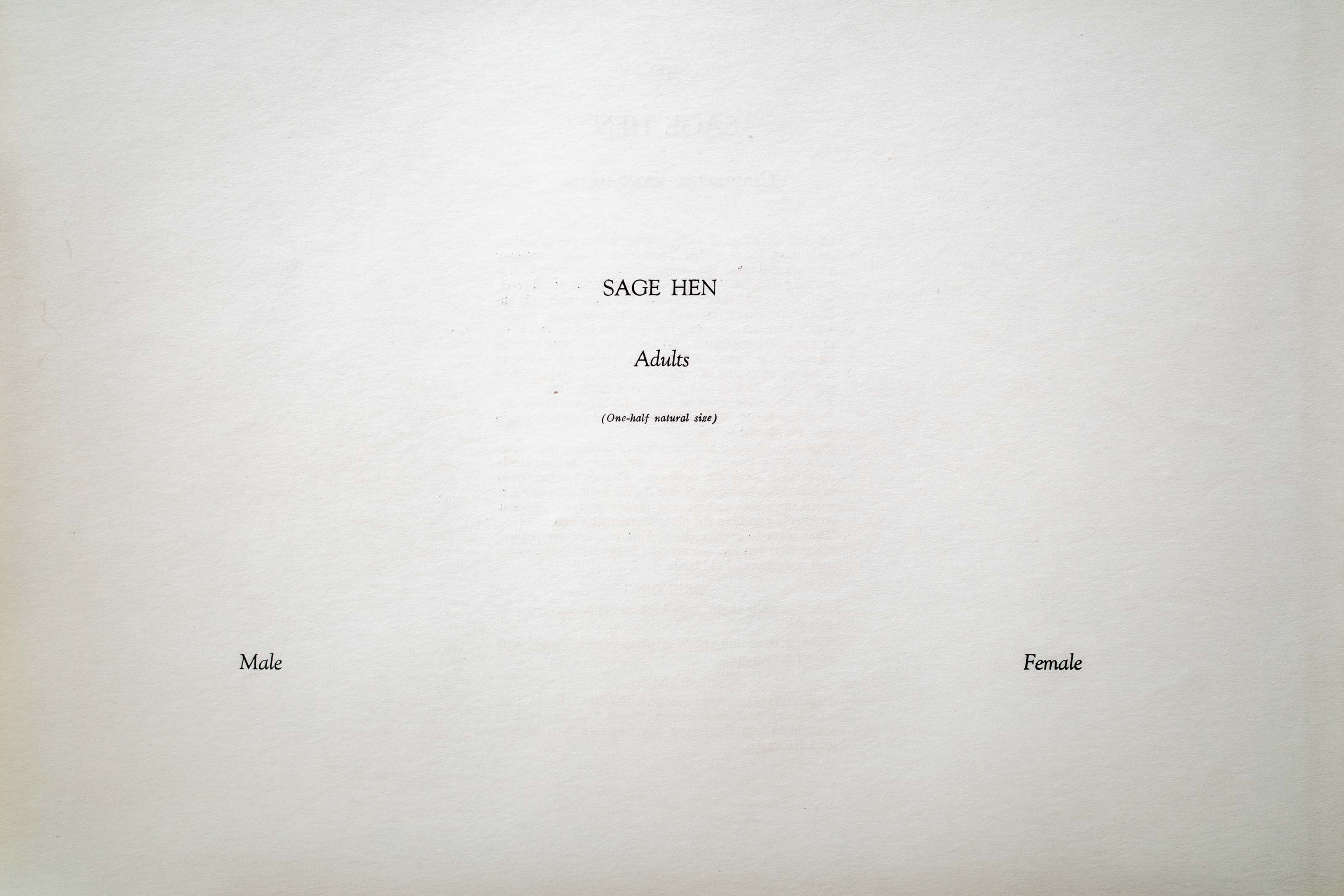
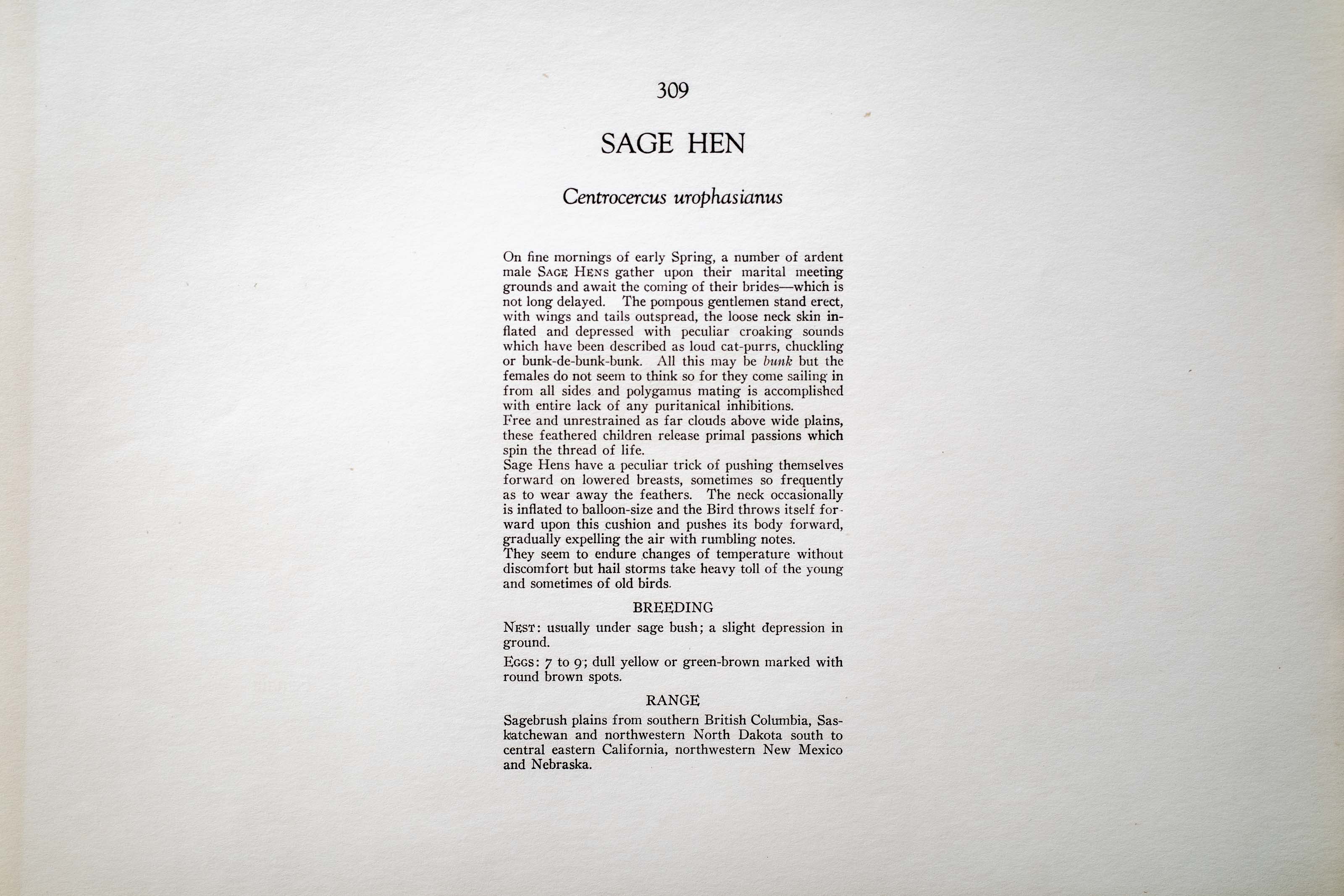

Unknown
1930
5
309
A team of dedicated board members, volunteers, and student interns has published every page in Volume 9. This volume includes 360 images of paintings and lyrical descriptions of birds, now available online for everyone to enjoy anywhere in the world. This is a monumental task. Each volume requires approximately 400 hours to photograph, edit, transcribe, catalog, and publish online. We need your support to complete this work.
If you're tech-savvy, have a good eye, are meticulous with details, and love structured data, please consider volunteering by emailing us at hello@rexbrasher.org.
We encourage all bird lovers and supporters to consider a monetary donation to support our mission to make Rex's work available for everyone. You can provide a one-time or recurring donation online.
On fine mornings of early Spring, a number of ardent male SAGE HENS gather upon their marital meeting grounds and await the coming of their brides — which is not long delayed. The pompous gentlemen stand erect, with wings and tails outspread, the loose neck skin inflated and depressed with peculiar croaking sounds which have been described as loud cat-purrs, chuckling or bunk-de-bunk-bunk. All this may be bunk but the females do not seem to think so for they come sailing in from all sides and polygamus mating is accomplished with entire lack of any puritanical inhibitions.
Free and unrestrained as far clouds above wide plains, these feathered children release primal passions which spin the thread of life.
Sage Hens have a peculiar trick of pushing themselves forward on lowered breasts, sometimes so frequently as to wear away the feathers. The neck occasionally is inflated to balloon-size and the Bird throws itself forward upon this cushion and pushes its body forward, gradually expelling the air with rumbling notes.
They seem to endure changes of temperature without discomfort but hail storms take heavy toll of the young and sometimes of old birds.
NEST: usually under sage bush; a slight depression in ground.
EGGS: 7 to 9; dull yellow or green-brown marked with round brown spots.
Sagebrush plains from southern British Columbia, Saskatchewan and northwestern North Dakota south to central eastern California, northwestern New Mexico and Nebraska.